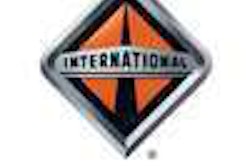EBE Technologies (www.ebe-inc.com), a provider of business process management solutions, completed its interface with Instructional Technologies’ (ITI) computer-based training solutions, Pro-Tread and Pro-Tread In-Cab.
Trucking software provider Profit Tools (www.profittools.net) introduced Mobile Office, a mobile computing system designed to deliver document transfer and print capabilities to drivers on the road.
GE Capital Solutions Fleet Services (www.gefleet.com) developed a product-controls fuel card designed to enable drivers to purchase oil, car washes, coolant and wiper fluid, in addition to fuel.
Xata Corp. (www.xata.com) announced that Eby-Brown – a major U.S. tobacco, candy and convenience distributor – has adopted Xatanet as its fleet optimization platform.
Cadec Global (www.cadec.com) launched Mobius Insight, a new add-on feature to its flagship Mobius TTS onboard computer and fleet management software. Mobius Insight provides dozens of preconfigured dashboards for transportation executives.
Intermec (www.intermec.com) announced its PB2 and PB3 commercial mobile receipt printers designed to provide low-cost, wearable receipt printing solutions for DSD/route accounting, retail queue busting and field service applications.
Refrigerated carriers know the risks involved in moving temperature-sensitive goods. A fluctuation of only a few degrees can lead to a total cargo loss.
One way to prevent such mistakes is by early detection. Trailer monitoring systems can provide real-time visibility of reefer status, enabling fleet managers to confirm at any time that their refrigeration units consistently are within the operating parameters requested by customers.
Both Thermo King and Carrier Transicold have a standard interface protocol that allows any third-party system to communicate with the microprocessors of their latest refrigeration units. With this protocol, fleets can monitor a variety of operating parameters, including reefer power status, operating mode, return air temperature, set point, operating hours, battery voltage, fuel level and any fault codes or alarms.
Besides passing along information from the trailer, the interface extends in the other direction. Fleet managers can change temperature set points or turn refrigeration units on or off by using any computer with an Internet connection. However, not all trailer monitoring systems presently allow users to change reefer settings.
“When you start talking with (fleet) executives, they get real shy about starting an engine remotely,” says Bob Montgomery, product development leader for GE Asset Intelligence, which offers the cellular-based VeriWise reefer management system. “People will gain confidence in the safety mechanisms over time.”
Besides the fact that some vendors presently do not offer remote control, another major difference between offerings is with the power supply. “We have always taken power from the tractor,” Montgomery says. More recently, VeriWise also has started taking power directly from both Carrier and Thermo King units, he says. “In some cases, we also put solar power,” Montgomery says.
Guardian Technologies earlier this year announced ReeferGuard, a system with integrated solar cell technology to gather energy. The system draws power from the reefer when it is on, and when the reefer is off, ReeferGuard automatically converts to full solar power, says Gary Hadfield, chief operating officer.
TransCore’s Sense & Track monitoring system includes a reefer installation that connects to the microprocessor. Sense & Track, which uses an autonomous power supply of lithium-based battery packs, is designed to utilize vehicle power when the trailer is connected to a tractor, the company says.
CarrierWeb’s ReeferMate is designed to run completely off of the reefer’s power supply; it has no internal power supply. The system provides real-time exception alerts, historical reporting and two-way communication with reefers, says Norman Thomas, vice president of marketing.
Tom Robinson, executive vice president of StarTrak Systems, says his company offers a satellite- and cellular-based reefer monitoring system called ReeferTrak Sentry. By using geofencing technology, StarTrak can combine accurate fuel-level readings with reefer logistical information, including the time spent and fuel burned at customer locations for loading and unloading events. This capability makes it possible to include surcharges for excess fuel burned, Robinson says.
GE VeriWise with reefer monitoring can capture fuel usage data for accessorial charges, but Montgomery says that its customers have found that they don’t need to have an independent fuel sensor. By using VeriWise, they know when the trailer arrived, what time the reefer is turned on and its operating speed (high or low). This information allows them to derive the amount of fuel burned at each customer location, he says.
Another difference among reefer monitoring systems is whether or not they can communicate with the in-cab units. Reefer units have an “idiot light” on the trailer that drivers can see in their rearview mirror. For added protection, Qualcomm says its reefer service for its T2 untethered trailer-tracking system can work in conjunction with its in-cab mobile hardware for drivers to be aware of alerts immediately.












